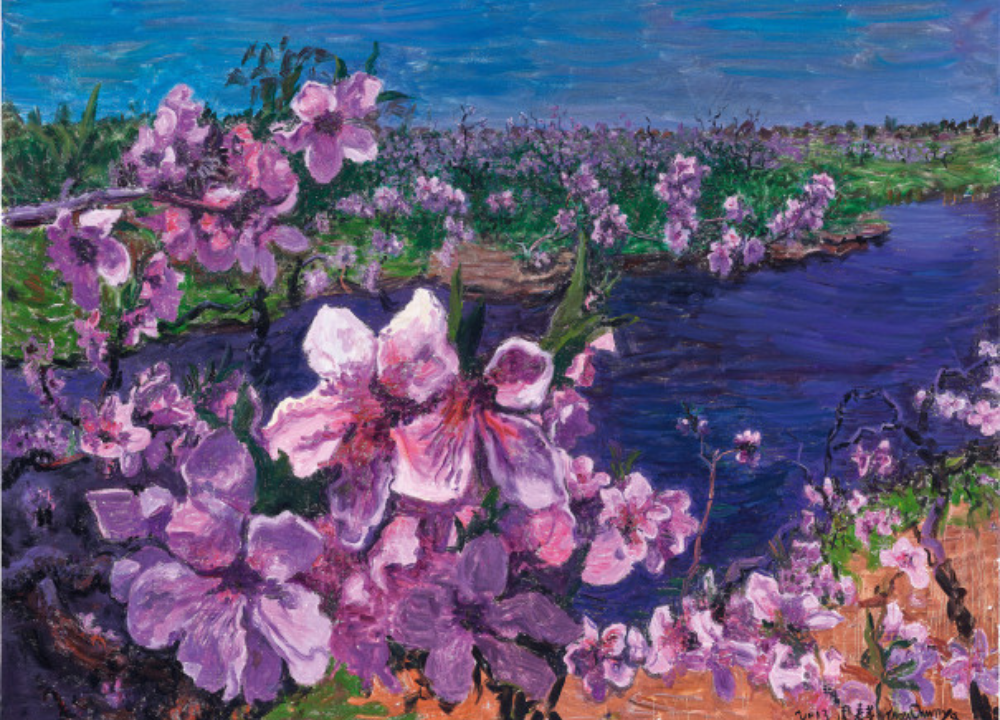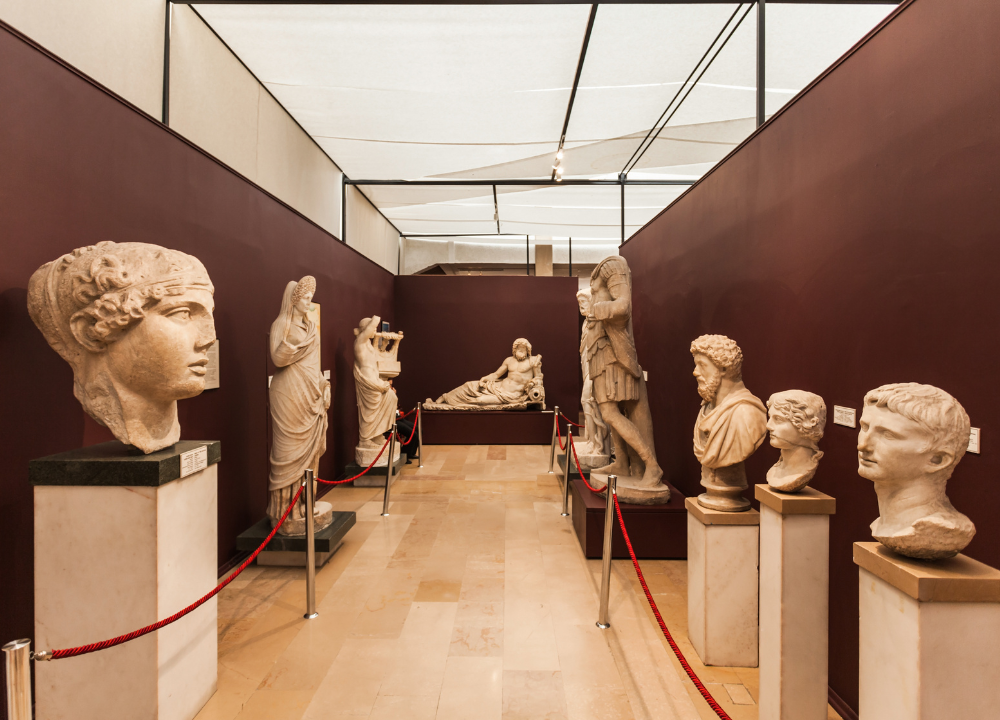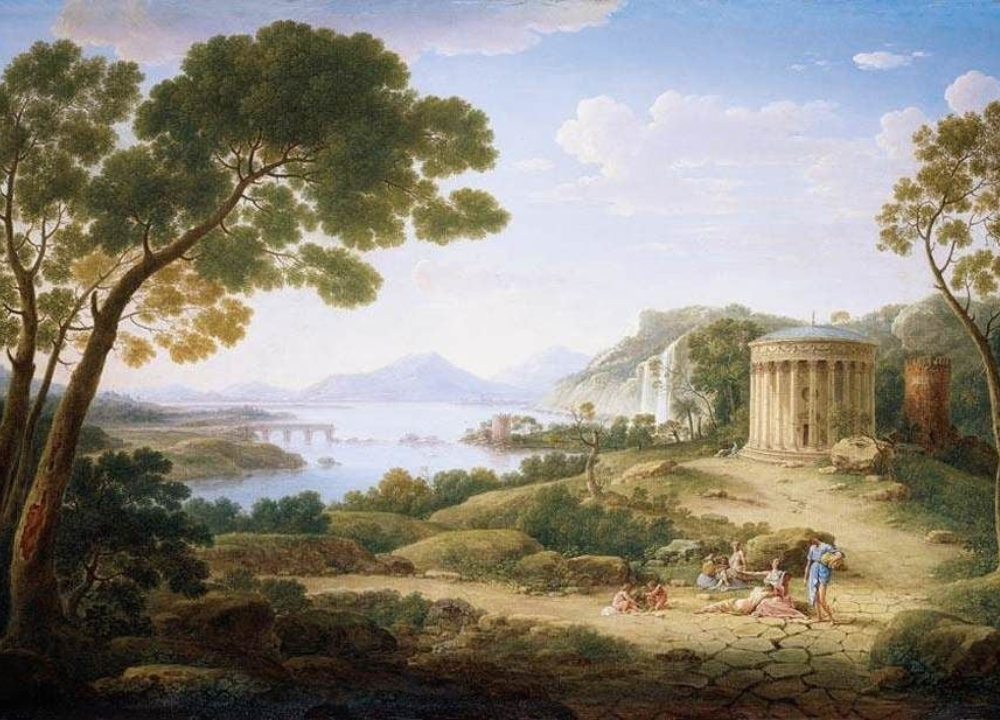Feeling stuck and unable to create can be frustrating. When artist’s block hits, it’s like your ideas disappear, leaving you staring at a blank canvas or screen.
But this doesn’t have to last. You have the power to break through and find fresh inspiration. You’ll discover 5 simple and effective ways to spark new ideas and get your creativity flowing again. Keep reading—your next great masterpiece is closer than you think.
Recognize Artist’s Block
Overcoming artist’s block starts with recognizing it clearly. Understanding the nature of this creative pause helps artists face it head-on. Knowing what causes the block and noticing its signs can guide artists back to their flow. This section explores how to identify artist’s block with easy tips and clear signals.
Common Causes
Artist’s block often arises from several common reasons. Stress and pressure can drain creativity quickly. When artists expect too much from themselves, they may freeze and stop creating.
Other causes include:
- Fear of failure: Worrying about making mistakes can stop ideas from forming.
- Lack of inspiration: Feeling uninspired or bored reduces creative energy.
- Burnout: Working too hard without breaks tires the mind and body.
- Perfectionism: Trying to create perfect work may cause hesitation and doubt.
- External distractions: Noise, interruptions, or personal issues can break focus.
These causes often overlap. Identifying the exact reason helps in choosing the right way to spark new ideas.
| Cause | Description | Effect on Creativity |
|---|---|---|
| Fear of Failure | Worry about making mistakes or being judged | Blocks new ideas and risks |
| Lack of Inspiration | Feeling bored or uninspired by surroundings | Reduces motivation to create |
| Burnout | Overworking without rest | Depletes energy and focus |
| Perfectionism | Demanding flawless results | Causes hesitation and doubt |
| External Distractions | Noise, interruptions, personal issues | Breaks concentration |
Signs To Watch For
Recognizing artist’s block early helps stop it from lasting too long. Some signs appear in thoughts, feelings, and behaviors. Spotting these signs alerts artists to take action.
Common signs include:
- Difficulty starting projects: Feeling stuck before even beginning.
- Lack of ideas: Mind feels empty or repetitive.
- Frustration and irritability: Getting upset easily with small problems.
- Avoiding work: Making excuses to delay creating art.
- Loss of confidence: Doubting your skills or worth as an artist.
Other signs affect physical and emotional state. These include feeling tired, anxious, or unmotivated. Tracking these signs over days or weeks shows if the block is serious.
| Sign | What It Means | Impact |
|---|---|---|
| Difficulty Starting | Struggling to begin a new piece | Delays projects and reduces output |
| Lack of Ideas | Feeling mentally blank or stuck | Limits creativity and progress |
| Frustration | Getting upset with small issues | Creates negative feelings about art |
| Avoidance | Putting off art tasks | Stops creative work completely |
| Loss of Confidence | Doubting your artistic skills | Reduces willingness to try |
Change Your Environment
Changing your environment can be a powerful way to overcome artist’s block. Staying in the same place often limits creativity. A new setting can offer fresh views, sounds, and feelings. These new experiences can inspire new ideas. Movement and change help the brain think differently and break old thought patterns.
Creative Spaces
Creative spaces are places designed to boost imagination and focus. These spots can be a room, a studio, or even a corner with your art supplies. Changing where you create can spark fresh ideas. A cluttered desk may block your mind, but a tidy, bright space can open it.
Try these tips to create or find your ideal creative space:
- Declutter: Remove unnecessary items to clear your mind.
- Add color: Use colors that inspire you, like blue for calm or yellow for energy.
- Good lighting: Natural light works best, but a soft lamp can help too.
- Personal touches: Include objects that make you happy or remind you of good times.
- Change location: Work in a café, library, or art gallery to feel different energy.
The table below shows how different environments affect creativity:
| Environment | Effect on Creativity | Best For |
|---|---|---|
| Quiet Studio | Focus and deep work | Detailed projects and concentration |
| Outdoor Park | Relaxation and fresh ideas | Brainstorming and sketching |
| Café | Background noise sparks creativity | Social art and casual work |
| Gallery or Museum | Exposure to new art styles | Inspiration and learning |
Nature And Inspiration
Nature offers endless inspiration for artists. The colors, shapes, and sounds can help break mental blocks. Being outside can clear your mind and reduce stress. It changes your mood and improves focus.
Spending time in nature can:
- Help you observe details like light and shadow.
- Give you new subjects to draw or paint.
- Increase your energy and creativity.
- Allow quiet moments to think deeply.
- Improve your mood and reduce anxiety.
Simple ways to use nature for inspiration include:
- Walking in a park or forest to notice colors and patterns.
- Sketching plants, trees, or animals.
- Using natural objects like leaves or stones in your art.
- Listening to natural sounds to relax your mind.
- Taking photos of interesting scenes for later reference.
Nature can help you see the world differently. Even a small change, like sitting near a window with a view, can bring new ideas. Try spending time outside each day. Notice how your creativity grows.
Try New Techniques
Trying new techniques can breathe life into your creative process. It breaks the routine and opens fresh paths for your imagination. When artist’s block hits, switching up your approach often sparks new ideas. Exploring new methods challenges your skills and helps you see your art in a different light.
Experiment With Mediums
Changing the medium you work with can inspire new creativity. If you usually paint with acrylics, try watercolors or charcoal. Each medium has unique qualities that affect how you create and think.
Experimenting with different mediums can:
- Enhance your skills by forcing you to adapt.
- Reveal new textures and effects you hadn’t used before.
- Stimulate your senses and make art more exciting.
Here is a simple table showing common mediums and their characteristics:
| Medium | Texture | Drying Time | Ease of Use |
|---|---|---|---|
| Acrylic | Smooth, thick | Fast | Easy |
| Watercolor | Light, transparent | Moderate | Moderate |
| Charcoal | Rough, smudgy | Instant | Medium |
| Oil | Thick, rich | Slow | Hard |
Start with small projects in new mediums. This keeps the pressure low and fun high. Use simple shapes or quick sketches. Notice how the medium changes your expression. Over time, you may find a favorite new tool that excites you.
Explore Different Styles
Trying out different art styles can unlock creative energy. Your usual style may feel safe but also limiting. Exploring new styles encourages growth and fresh perspectives.
Here are easy ways to explore styles:
- Copy a style: Choose a style you like and try to recreate it.
- Mix styles: Combine elements from two or more styles.
- Use style prompts: Pick random styles and create quick sketches.
Common art styles and their features:
| Style | Description | Famous Artists |
|---|---|---|
| Realism | Detailed, lifelike images | John Singer Sargent |
| Impressionism | Loose brushwork, light focus | Claude Monet |
| Abstract | Shapes, colors without clear forms | Wassily Kandinsky |
| Surrealism | Dream-like, strange imagery | Salvador Dalí |
Exploring styles helps you see your art differently. It can guide you to new ideas and approaches. Keep your mind open and enjoy the process of discovery. This journey can turn artist’s block into a fresh start.
Collaborate With Others
Artist’s block can feel like a wall too high to climb alone. Collaborating with others breaks down that wall. Sharing ideas and working with different minds brings fresh views and new energy. It pushes creativity beyond personal limits and opens doors to unexpected inspiration.
Benefits Of Teamwork
Teamwork blends different skills and ideas. It brings a mix of strengths that helps solve creative problems faster. When artists collaborate, they often see things from angles they missed before. This variety sparks new ideas and keeps the creative flow alive.
Here are some key benefits of teamwork for artists:
- Fresh Perspectives: Different viewpoints challenge old habits and open new paths.
- Shared Skills: Team members bring unique talents that improve the project.
- Motivation Boost: Working with others increases energy and commitment.
- Feedback and Growth: Honest feedback helps artists improve their work.
| Benefit | Description | Example |
|---|---|---|
| Fresh Ideas | New viewpoints spark unique creative solutions. | Mixing painting styles in a group project. |
| Skill Sharing | Artists teach each other new techniques. | One artist helps another with digital tools. |
| Support System | Team members encourage and inspire each other. | Regular group critiques to improve work. |
Teamwork turns artist’s block into a chance to learn and grow. It makes the creative journey less lonely and more exciting.
Finding Creative Communities
Creative communities are safe spaces where artists share ideas and support. They connect people who face similar challenges. These groups help artists find inspiration outside their usual circles.
Ways to find creative communities:
- Join Art Classes: Meet artists learning together and share ideas.
- Attend Local Meetups: Find groups in your area focused on art or creativity.
- Explore Online Forums: Join websites or social media groups where artists talk and share work.
- Participate in Workshops: Learn new skills and meet artists with similar goals.
Creative communities offer:
- Regular Feedback: Honest advice to improve your art.
- Inspiration: Seeing others’ work can spark new ideas.
- Collaboration Opportunities: Chances to work on projects with others.
- Emotional Support: Understanding peers reduce feelings of isolation.
Here is a simple table summarizing types of creative communities:
| Type | Where to Find | Main Benefit |
|---|---|---|
| Local Art Groups | Community centers, galleries | Face-to-face connection |
| Online Forums | Reddit, Facebook groups | Global network |
| Workshops | Art schools, studios | Skill building |
Joining a creative community breaks isolation. It fills your mind with new ideas and energy. This can be the key to overcoming artist’s block.
Develop Daily Habits
Developing daily habits plays a key role in overcoming artist’s block. Consistency builds momentum and trains your mind to stay creative. Small, regular actions help ideas flow naturally. Instead of waiting for inspiration, daily habits create a steady rhythm of creativity.
Routine Creativity Exercises
Routine creativity exercises prepare your brain to think in new ways. These exercises are short activities that focus on different creative skills. Practicing daily helps your mind break free from usual patterns. You become more flexible in your thinking and open to new ideas.
- Warm-up sketches: Spend 10 minutes drawing anything without rules.
- Word prompts: Pick a random word and create art inspired by it.
- Color challenges: Use only two or three colors to create a piece.
- Speed painting: Set a timer for 15 minutes and paint quickly.
- Creative constraints: Limit yourself to unusual materials or tools.
These exercises are easy to fit into your day. They do not require much time but help maintain a creative flow. You can track your progress in a simple table like this:
| Exercise | Time Spent | Focus Area | Notes |
|---|---|---|---|
| Warm-up Sketches | 10 minutes | Free Drawing | Loosen up hand movement |
| Word Prompts | 15 minutes | Imagination | Explored new themes |
| Color Challenges | 20 minutes | Color Theory | Focused on limited palette |
Try changing exercises weekly to keep your brain active. The key is to make creativity a habit without pressure.
Journaling And Idea Tracking
Journaling and idea tracking help capture thoughts before they slip away. Writing daily about your art process, feelings, and ideas keeps your mind organized. This habit uncovers patterns and sparks new connections. Journals become a treasure chest of inspiration during artist’s block.
Keep your journal simple. Use bullet points or short sentences to note ideas quickly. Track what worked and what didn’t in your projects. This habit improves your understanding of your creative flow.
- Write a quick summary of daily creative activities.
- Note any new ideas or themes that appear.
- Record challenges and how you solved them.
- List questions or experiments to try next.
Use a table to track ideas and progress like this:
| Date | Idea | Status | Notes |
|---|---|---|---|
| April 10 | Abstract shapes with cool colors | Planned | Try with acrylics |
| April 12 | Sketch daily life scenes | In Progress | Focus on light and shadow |
| April 15 | Experiment with mixed media | Completed | Used collage and paint |
Journaling helps you review your creative journey and plan next steps clearly. This daily habit supports steady growth and idea generation.
Embrace Failure
Overcoming artist’s block often means changing how you think about failure. Embracing failure helps artists break free from fear and try new things. It opens doors to fresh ideas and creative growth. Instead of seeing failure as a problem, view it as a step forward.
Learning From Mistakes
Every mistake holds a lesson for artists. When you make a wrong stroke or choose the wrong color, it shows what does not work. These lessons guide you to refine your skills and ideas. Learning from mistakes means observing what went wrong and asking:
- What part of the art needs change?
- How can I improve the next attempt?
- What new approach can I try?
Writing down your mistakes and thoughts can help track progress. Use a simple table like this to organize your learning:
| Mistake | What I Learned | Next Steps |
|---|---|---|
| Colors clashed badly | Use a color wheel to check harmony | Test color combinations before final work |
| Proportions off | Measure shapes before drawing | Practice sketching with guidelines |
Failure is feedback. It points out where to grow. Artists who take time to analyze mistakes often find their work improves faster. Mistakes are not the end. They are part of the creative journey.
Building Resilience
Resilience means keeping going, even after failing. It is a key skill for artists to overcome blocks. Instead of giving up, resilient artists try again with new energy. Here are ways to build resilience:
- Set small goals: Break projects into easy steps.
- Celebrate progress: Notice every small win.
- Stay positive: Replace negative thoughts with hopeful ones.
- Seek support: Talk with friends or other artists.
- Practice patience: Accept that growth takes time.
Resilience helps artists bounce back quickly. It turns failure into motivation. Here is a simple chart showing how resilience helps during artist’s block:
| Without Resilience | With Resilience |
|---|---|
| Give up after a mistake | Try again with a new idea |
| Feel stuck and frustrated | Look for small wins and keep moving |
| Avoid challenges | Face challenges as chances to grow |
Resilience fuels creativity. It turns blocks into breakthroughs. Keep practicing it to find new ideas and keep your art alive.




